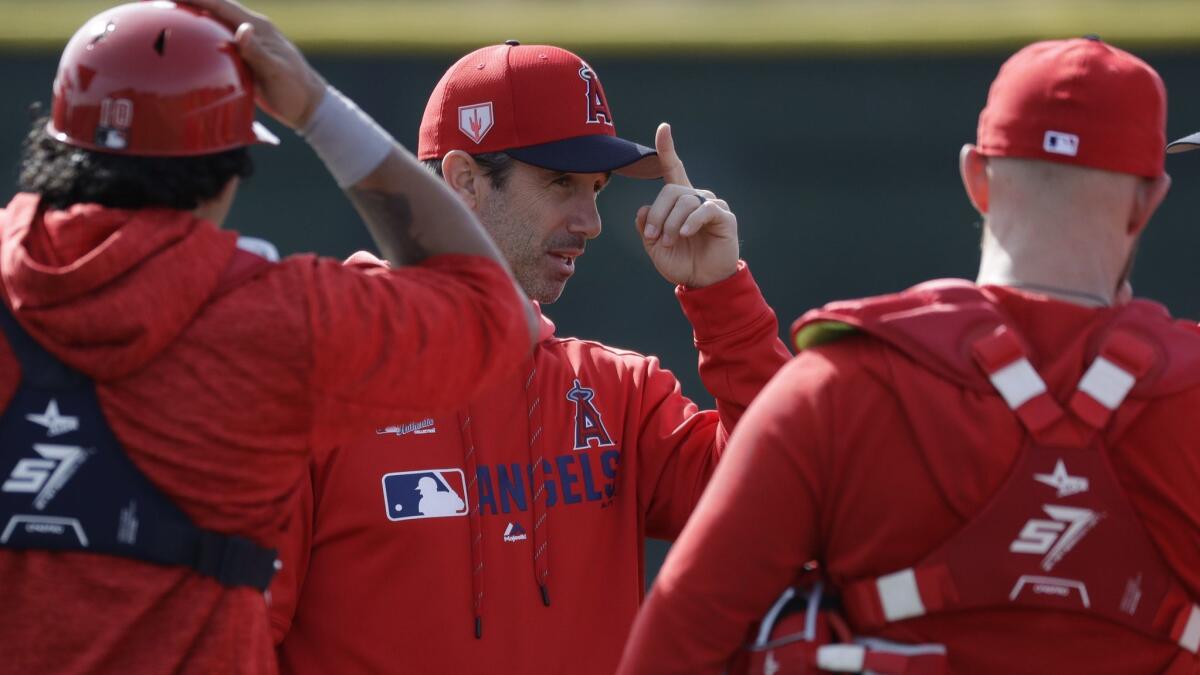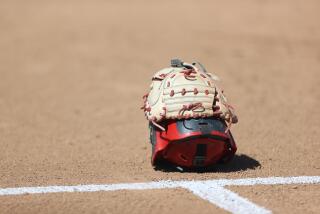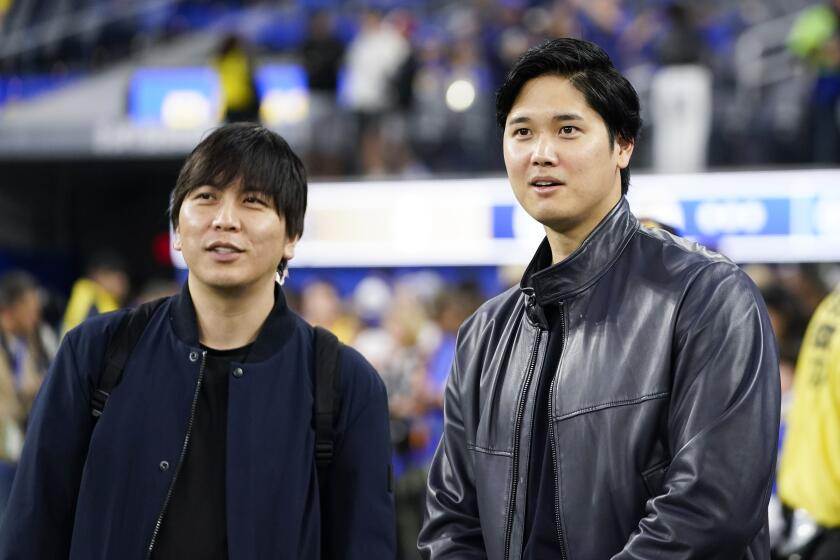Angels catch on to Rapsodo, Edgertronic pitching technology

Reporting from Tempe, Ariz. — As Angels pitchers worked at spring training the last few days, they found high-speed Edgertronic cameras mounted on tripods behind the rubbers and Rapsodo radar units installed near the plates on the opposite end.
The devices had never appeared in such an official capacity at the Angels’ complex, but they were expected. Under new manager Brad Ausmus, the Angels were always going to be analytically savvier in 2019 than any of the previous teams.
“It’s just such a good tool for getting instant feedback or for recognizing flaws,” Ausmus said.
The introduction of Edgertronic and Rapsodo machines to Major League Baseball occurred a few years ago, when the Houston Astros made use of the instruments to enhance pitching instruction in 2017. After the Astros beat the Dodgers to win the World Series, at least five teams installed the technology at their complexes the next spring in search of a competitive edge.
The Angels have caught up to the trend a year later. About a dozen teams, including the Dodgers, began using the devices for the first time when pitchers and catchers reported to spring training in Arizona and Florida.
The reviews have mostly come back positive, Ausmus said. Pitchers have found value in the slow-motion videos that Edgertronic cameras capture in real time. The number of frames makes it easy to pick out the intricacies of their movements on the mound. The Rapsodo unit measures complementary information, like spin rate, efficiency and axis, and pitch break.
Top pitching prospect Griffin Canning, the Angels’ second-round pick in 2017 from UCLA, learned he could improve the movement of his four-seam fastball by adjusting his release. He noticed in videos that one of his fingers came off the baseball a little later than the other, limiting the pitch’s movement.
Sign up for our daily sports newsletter »
“It’s nice to be aware of it and kind of work on it in catch play,” Canning said.
The deftness with which new pitching coach Doug White delivers the information is just as valuable as the Angels’ new gadgets, which White used extensively during his time in the Astros organization from 2014 to 2018.
“I think what he’s bringing to the table right now for us is absolutely incredible,” said 26-year-old reliever Justin Anderson, who entered the spring competing for his first opening-day roster spot.
Cody Allen, the former Cleveland Indians closer who signed a one-year deal with the Angels last month, was exposed to Rapsodo technology at his offseason workout facility the last four years. But in the short time he has worked with White, Allen has already found more applicable uses for the data based on White’s presentation.
White won’t bog pitchers down in numbers, Allen said. He’ll offer instead explanations for what they can do with their bodies, such as tweaking their arm slot or smoothing out their follow-through, to improve results.
“He does a really good job of pulling back,” Allen said.
White mined information from videos and internal databases and composed plans for all the pitchers in the Angels organization. He sought to maximize their potential.
The Angels enhanced the information at White’s disposal by investing in machines that cull advanced data from pitch movement similar to what the ubiquitous TrackMan systems provide, but at a fraction of the cost. The Rapsodo pitching device is portable, whereas the TrackMan system requires more complex installation. TrackMan, which uses 3D Doppler radar and has been fully operational in all major league stadiums since 2017, also costs thousands of dollars more than one $4,500 Rapsodo unit and one $7,500 Edgertronic camera baseball kit, according to public reports.
The Angels plan to keep Rapsodo and Edgertronic instruments handy as they play at Angel Stadium and on the road throughout the season, so new data will be available to pitchers whenever they want it.
“I’ve learned more in the past month than I have in the past four or five years,” left-hander Tyler Skaggs said in a January phone call. “Which is no knock on any coaches, but I’m just really excited with all the information we have now.”
More to Read
Go beyond the scoreboard
Get the latest on L.A.'s teams in the daily Sports Report newsletter.
You may occasionally receive promotional content from the Los Angeles Times.







